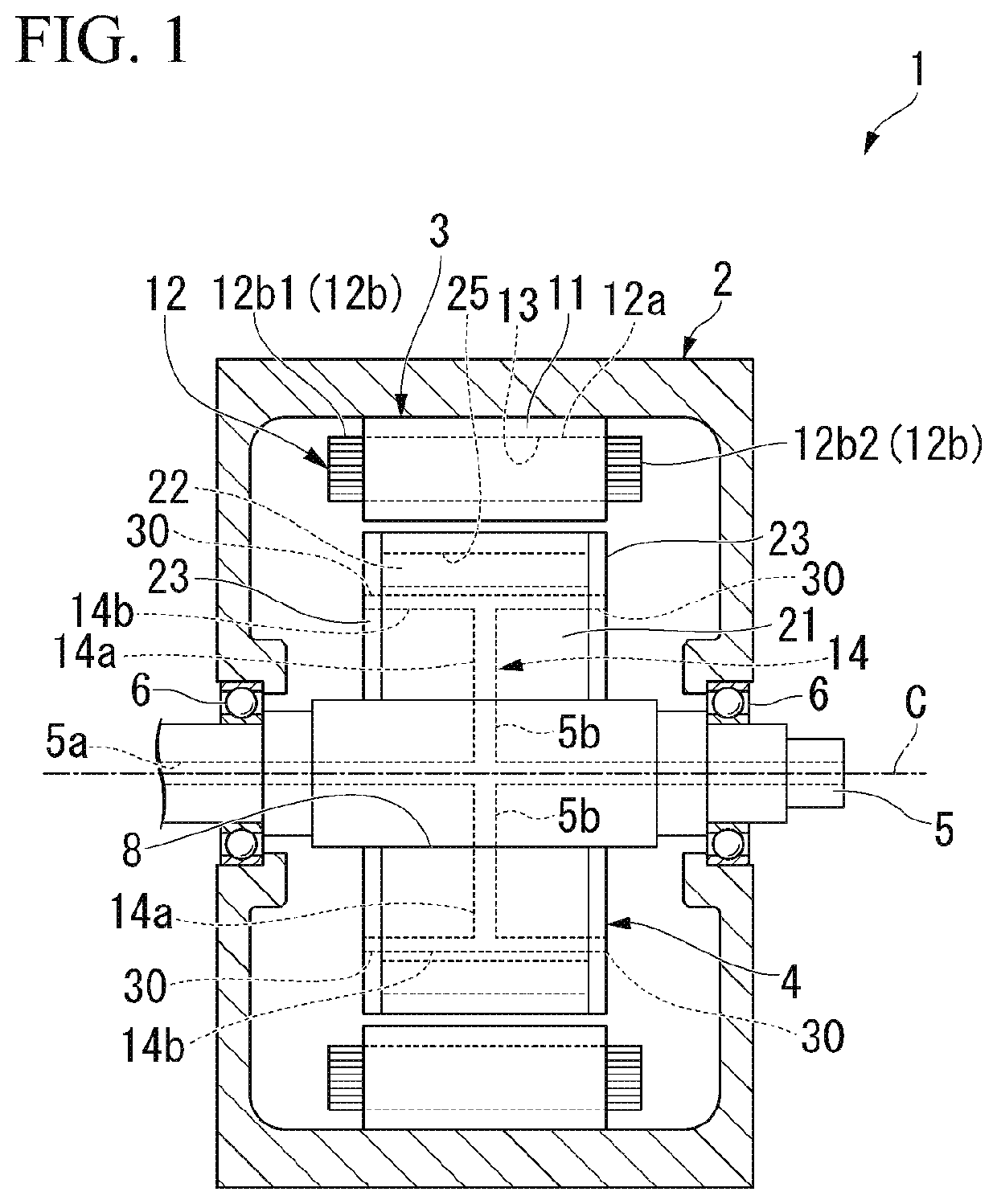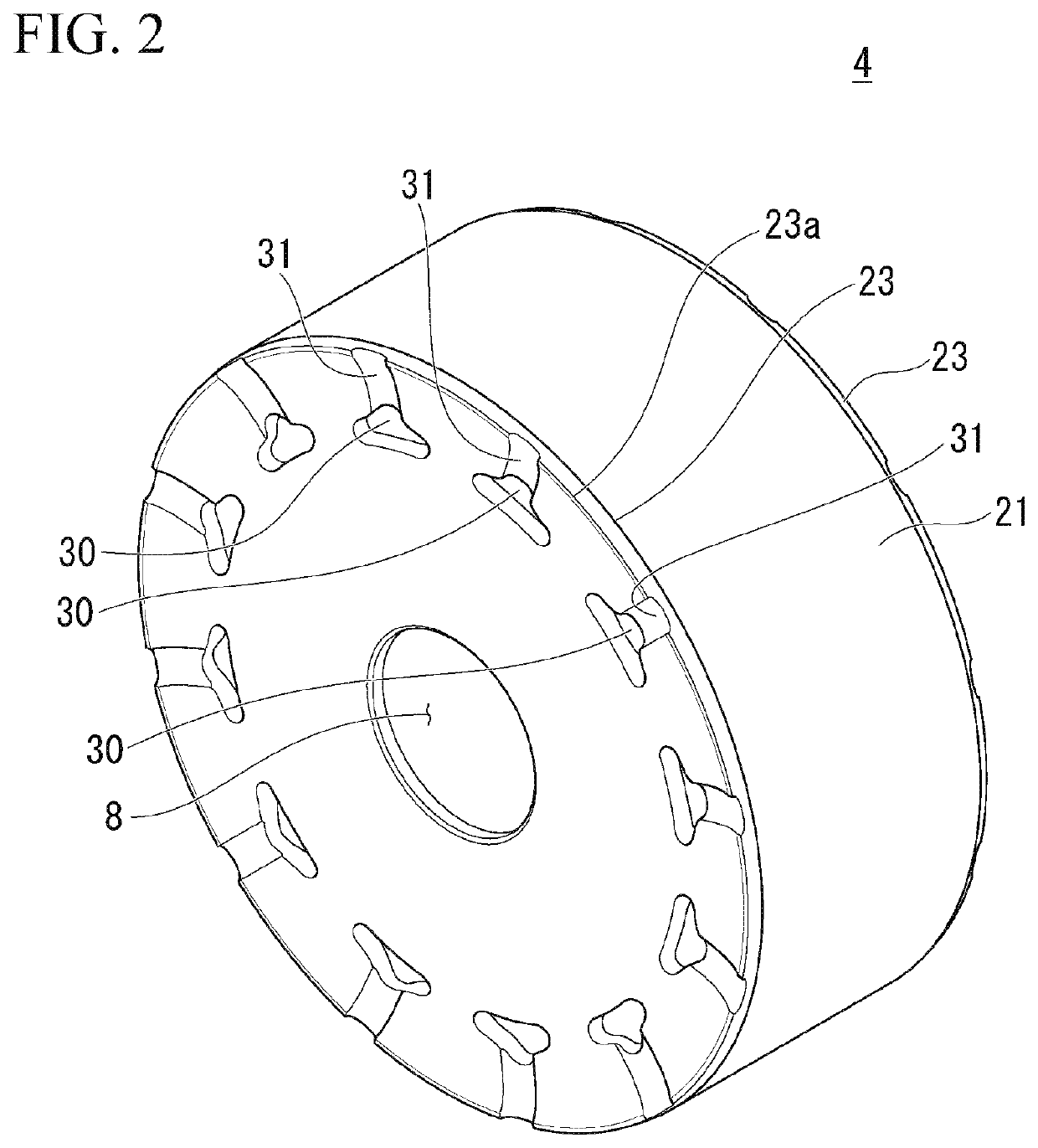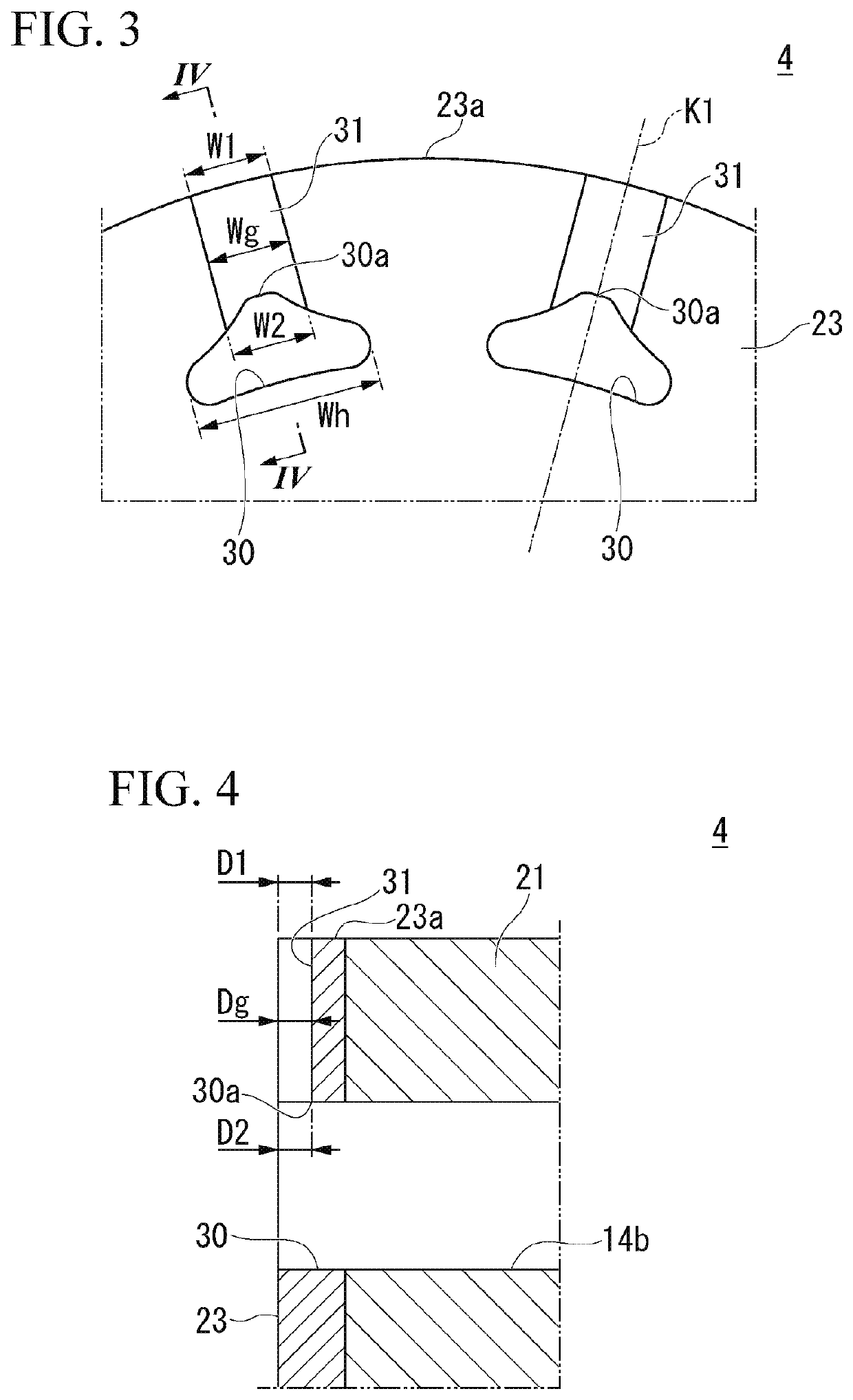Rotary electric machine
a rotary electric machine and electric motor technology, applied in the direction of dynamo-electric machines, magnetic circuit rotating parts, magnetic circuit shapes/forms/construction, etc., can solve the problems of inefficient cooling of coils, inability to easily disperse refrigerant to stator coils, etc., to achieve efficient cooling of coils, improve the rotation efficiency of rotary electric machines, and facilitate ejection outward
- Summary
- Abstract
- Description
- Claims
- Application Information
AI Technical Summary
Benefits of technology
Problems solved by technology
Method used
Image
Examples
first embodiment
Rotary Electric Machine
[0027]FIG. 1 is a schematic configuration view showing an overall configuration of a rotary electric machine 1 according to a first embodiment. FIG. 1 is a view including a cross section taken along a virtual plane including an axis C.
[0028]As shown inFIG. 1, the rotary electric machine 1 includes a case 2, a stator 3, a rotor 4, an output shaft 5, and a refrigerant supply mechanism (not shown).
[0029]The case 2 has a cylindrical box shape that houses the stator 3 and the rotor 4. A refrigerant (not shown) is accommodated in the case 2. A portion of the stator 3 is disposed in a state of being immersed in the refrigerant in the case 2. For example, as the refrigerant, an automatic transmission fluid (ATF), which is a hydraulic oil used for transmission lubrication, power transmission, or the like, or the like may be used.
[0030]The output shaft 5 is rotatably supported by the case 2. Reference 6 in FIG. 1 indicates a bearing that rotatably supports the output sh...
second embodiment
[0077]In first embodiment, description has been made by taking an example in which the radially outer groove width W1 is substantially the same as the radially inner groove width W2 in the refrigerant passage groove 31, but the present invention is not limited thereto.
[0078]FIG. 7 is a perspective view of a rotor 204 according to a second embodiment. FIG. 7 corresponds to FIG. 2 of the first embodiment.
[0079]FIG. 8 is an enlarged view showing a main portion of the rotor 204 according to the second embodiment when viewed from the axial direction. FIG. 8 corresponds to FIG. 3 of the first embodiment.
[0080]In the second embodiment, constituents the same as those in the first embodiment will be denoted by the same references, and a detailed description thereof will be omitted.
[0081]As shown in FIG. 8, a radially outer groove width W1 in a refrigerant passage groove 231 may be smaller than a radially inner groove width W2 in the refrigerant passage groove 231. When viewed from the axial ...
PUM
 Login to View More
Login to View More Abstract
Description
Claims
Application Information
 Login to View More
Login to View More - R&D
- Intellectual Property
- Life Sciences
- Materials
- Tech Scout
- Unparalleled Data Quality
- Higher Quality Content
- 60% Fewer Hallucinations
Browse by: Latest US Patents, China's latest patents, Technical Efficacy Thesaurus, Application Domain, Technology Topic, Popular Technical Reports.
© 2025 PatSnap. All rights reserved.Legal|Privacy policy|Modern Slavery Act Transparency Statement|Sitemap|About US| Contact US: help@patsnap.com



